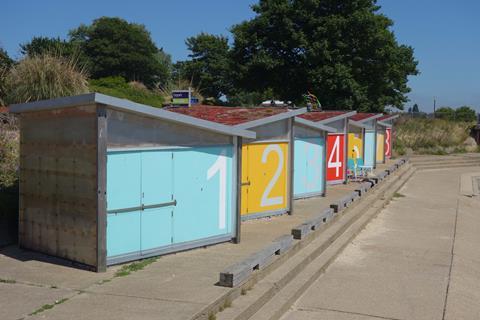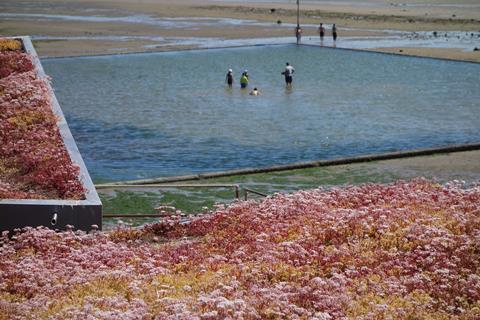Gillian Darley gets cabin fever on the Essex coast

Periodically this column lightens up to bring you instances of architectural high spirits, diversions and distractions, cheerful things found serendipitously along the way. “If you ever have to go to Shoeburyness” goes the first line of Billy Bragg’s ode to Essex, A13 Trunk Road to the Sea.
In the 1960s the Bragg family would drive out from Barking, via Dagenham and points east, to Southend. Arriving there they weren’t to be distracted by the obvious attractions of the mile-and-a-bit-long pier or the (then still intact) Kursaal amusement park, but pressed resolutely on. At Shoeburyness they settled down for a picnic on the beach and then embarked on a marathon walk which, to a small boy, seemed to go almost all the way to Holland.
Taking the train, in preference to the A13, three of us headed out there the other day, to spend the morning exploring one of the furthest extremities of Essex. The Garrison (there because of its exposed location) and its fine early industrial architecture is worth a good look but, in record-book heat at the seaside, what could be more refreshing than discovering that someone has taken a novel approach to the beach hut?

Ingenious in several respects, these competition-winning designs on East Beach are the work of a small London practice, Pedder and Scampton, headed by two women. The huts are in two groups, and were built in two phases, canted on plan to allow for views out, over and between them. Boldly coloured and numbered, they provide a distinct foreground frame to the immensity of the shore beyond, a tidal pool and then the seemingly infinite beach, alive with kite-surfers, paddlers and the rest. Beyond that is the distant traffic on the estuary, in the haze a procession of huge vessels heading in and out of Tilbury and the new Thames deep-water port, lumbering along in slow motion across the far horizon.
In close focus, the side walls of the huts (largely prefabricated so that construction could be carried out over the winter) are built with recycled materials packed into timber pallets, sandwiches of pebbles, glass chippings, shells and more, tamped down within translucent plastic panels. Inside they are neatly fitted out, translating the ergonomics of the caravan or camper van to the purpose. But approaching from the park behind, it’s the angled roofs that catch the eye first, planted with (sea-hardened) sedum – looking at its best this year – and effortlessly integrating the little structures within their wider setting.

The first tranche was built in 2014 and the second group completed very recently. A hut sells for a substantial sum, but so too do the more conventional, and highly sought-after, traditional versions up and down the East Anglian coast. Incidentally, the reason beach huts are the way they are is that they were originally made of canvas, with a little frill over the door, which became fancy eaves once they were translated into wood.
No more public than nearby seafront flats such as elegant, timber-clad Parade Walk (by Hawkins Brown), the location and relationship of beach huts to beach inevitably makes them the backdrop of the seaside, past which we can all stroll, peeping in and enjoying the individuality, perhaps a little envious of the occupants. Here, the latest additions to a well-established cabin vernacular are happily fresh, the amalgam of materials and finishes adding to the gaiety of the scene.
For the three of us, heading back to Southend for an afternoon launch (by the publishers, Focal Point Gallery) of Radical Essex, a collection of essays by various contributors (myself included) which focus on the openness to possibility that has long been characteristic of Essex, our unexpected discovery in Shoeburyness seemed pitch perfect.
















2 Readers' comments